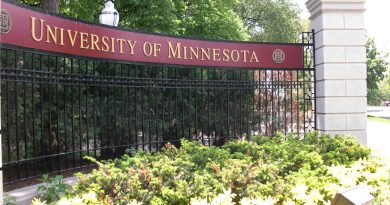Rural versus urban: What do those terms really mean at the University of Minnesota?
By Samantha Freeman and Michael Achterling
At a university where one-third of the undergraduate population is from Greater Minnesota, students often don’t realize how many of their peers come from outside of the Twin Cities.
But does that make those students “rural”? What does rural really mean anyway?
To many students, regardless of where they come from, the word rural is automatically associated with the words “farms” or “fields.”
Sarah Matschi, a student at the University of Minnesota from Stillwater, said the first images she thinks of when she hears the word “rural” is: “A small town, where everybody knows everybody, and also farms.”
Holly Hackenmiller, another university student who is from a town near Rochester, said the first thing she thinks of when she hears the word “rural” is: “farms and fields.”
For decades, the university has categorized “rural” as any area outside of the seven-counties of the Twin Cities, which include Anoka, Carver, Dakota, Hennepin, Ramsey, Scott and Washington counties.
In the university’s Official Enrollment Statistics, students from all other counties are grouped together as those from Greater Minnesota. The university does not identify students as “rural” or “urban” due to the “abstract and nuanced nature of those terms,” Katrinna Dodge, a spokeswoman with the university said in an email.
Although mindful that the state has actually evolved as urban, particularly in areas close to the metro, the university has retained the category Greater Minnesota to stay consistent with how it measures data about its student population, administrators say.
But as the state has grown, the realities of “rurality,” as it is sometimes called, have shifted.
In 2017, a report from the Minnesota State Demographic Center revised what Greater Minnesota means, creating a four-tier system to define an area’s character and understand the rural communities around Minnesota.
According to the report, titled Greater Minnesota, Refined and Revisited, the four tiers are: urban, large town, small town, and rural—all based on both population size and their proximities to other communities.
The report acknowledged the many changing demographics among Greater Minnesota and took a deeper look into those communities using different metrics than in the past.
One of the report’s authors, Andi Egbert, a former assistant director of the Minnesota State Demographic Center, said part of compiling the report was to more clearly define what are considered rural areas. County lines alone do not give a full picture of what rural is, she said.
Egbert, and her research team, turned to Rural Urban Commuting Area codes, a U.S. Census Bureau tool that gauges population density, urbanization and commuting patterns of different geographic areas.
This gave the researchers a much more “finely grained” way of seeing what was on the ground, she said—a “proximity-way of examining” the way Minnesotans actually experienced their lives in towns and small cities across the state.
One example, she said, is Willmar, with a population of nearly 20,000 and the neighboring, smaller town of New London, population 1,396.
“A lot of people in New London benefit from the proximity to Willmar,” she said, “but, if you were to remove Wilmar from the map, the experience of New Londoners would be entirely different.”
The report also identified the Rochester-area and its surrounding towns, including Hackenmiller’s own town, Mantorville in Dodge County, as urban because of its close proximity to the more densely populated Rochester.
“I guess it makes sense because it is so close to Rochester,” said Hackenmiller, who said she had never seen the report before. “But I just don’t think my town is very urban.”


